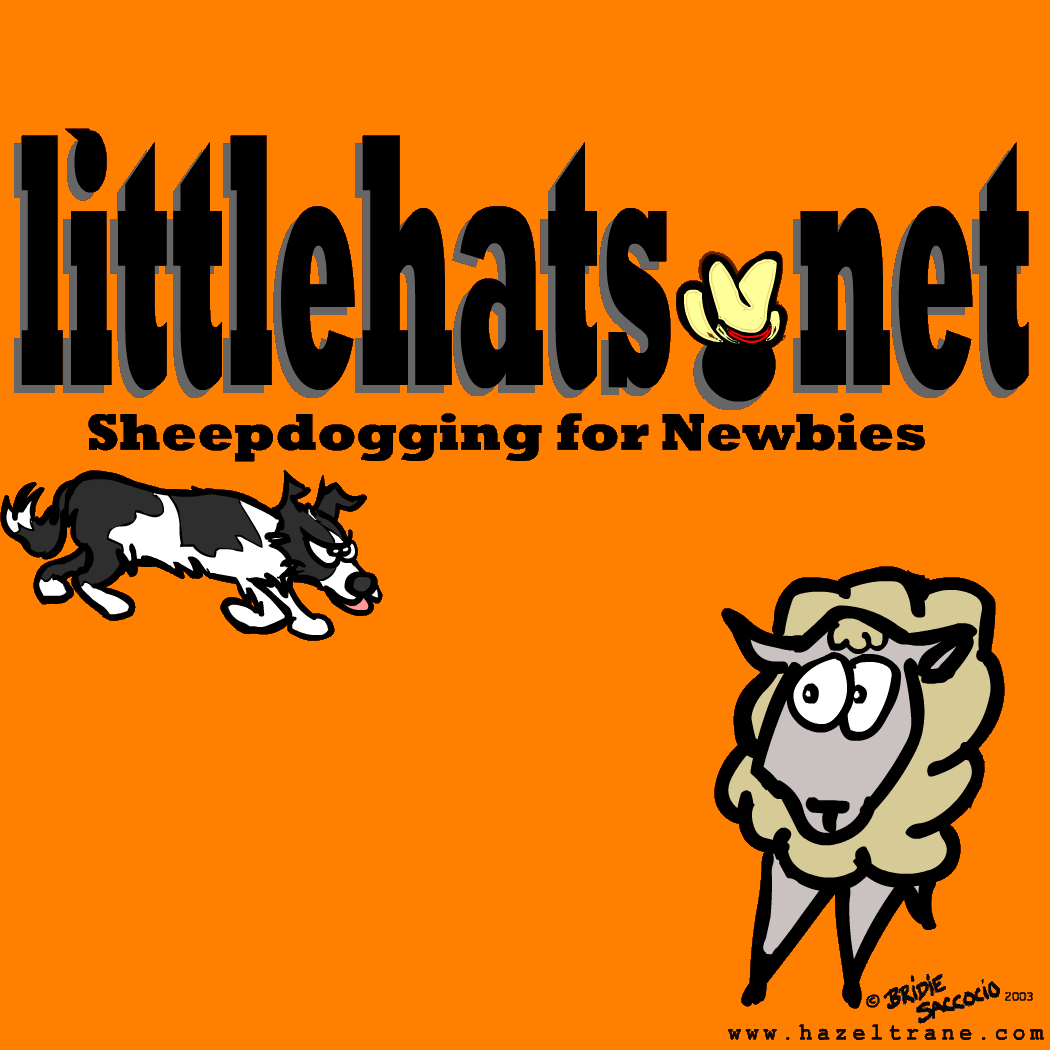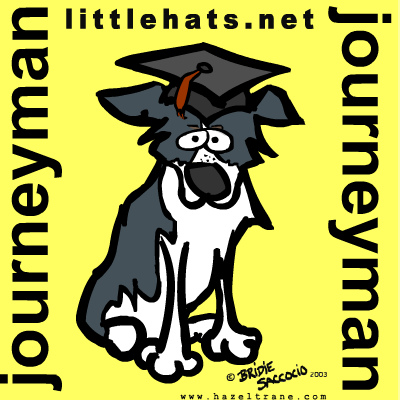


Sheep Psych 101
by Patrick Shannahan
Search This Site
Originally Published in American Border Collie Magazine. Reprinted with permission.
In conducting many of the clinics and judging trials this summer, I have noticed that the hardest transformation that a handler has to make is when they can trust their dog and concentrate on the sheep. Many of you that have been in my clinics get tired on hearing me say "Watch your sheep" but if you want to succeed in livestock dogs you have to understand livestock.
My background is not one of purely ranch life. I was one of those suburban kids who was fascinated with farm life and brought as much of the farm to my family as possible.
The one job that has helped my greatly with my border Collies is the four years during high school that I worked at our local livestock auction on the weekends.
At the auction I worked back in the pens loading and unloading animals by trial and error. I learned what made cows, sheep and pigs move and how I could control their moves. It was a lesson that I didn't realize would become so valuable later in my career.
The first time that was actually able to concentrate on using my knowledge was about 10 years later when I had a dog that was stable and in control. I tried to concentrate watching the heads of sheep, but found myself still wanting to watch the dog. It wasn't until I put the sheep and dog into a pasture of very tall grass and I could only see the sheep's heads and not the dog that I could concentrate on watching just the sheep's heads. Here I learned that I didn't need to watch the dog, the sheep would tell me exactly what he was doing.
Most of the handling mistakes I see could be corrected by watching the reaction of the livestock to the dog. By watching the sheep you can tell when to stop a dog on his flank. When the head was turned in the right direction, the body of the sheep will follow that direction. If the head of the sheep is concerned about the dog coming on too quickly, the body will be concerned and speed up to get away from the dog. The first signs of reaction of the sheep and dog is always at the sheep heads.
If you watch good livestock handlers work, they make as few moves as possible. They can tell where to put pressure on stock, and when patience is needed before pressure is applied. Although I am not as fast as the dogs, I feel that I can move livestock like the dogs by putting pressure at the same points that I would with a dog. If you are serious about how to work livestock, try a session or two without using your dog. See if you are correct when you apply pressure or need to flank yourself to turn the animal. If you are and observant student, you can improve your score on the trial field greatly with new livestock knowledge and without actually changing your dog.
Once you are able to watch the livestock your training will also improve. By watching the stock your don't need to guess how wide the dogs flanks need to be. The stock will tell you. If you find yourself going in circles without being able to line the sheep out most likely the dog is flanking too tight and by watching you can tell this. It will also tell you if your dog is pacing the stock properly, and when to slow his pace without stopping the dog.
There is nothing more important than learning this as you can grow as a handler. Most dogs that are stable will not do anything terrible and many of the problems could be corrected quickly if the handler would watch the reaction of the livestock and dog. When I see a handler watching the dog turn around the handler's post instead of the sheep turn around the post, I know the handler can be improved. So if you hear me discussing about the interaction of the livestock and dogs - realize I don't mean that you should go rent the Babe video, you should concentrate on your sheep and dog.
My background is not one of purely ranch life. I was one of those suburban kids who was fascinated with farm life and brought as much of the farm to my family as possible.
The one job that has helped my greatly with my border Collies is the four years during high school that I worked at our local livestock auction on the weekends.
At the auction I worked back in the pens loading and unloading animals by trial and error. I learned what made cows, sheep and pigs move and how I could control their moves. It was a lesson that I didn't realize would become so valuable later in my career.
The first time that was actually able to concentrate on using my knowledge was about 10 years later when I had a dog that was stable and in control. I tried to concentrate watching the heads of sheep, but found myself still wanting to watch the dog. It wasn't until I put the sheep and dog into a pasture of very tall grass and I could only see the sheep's heads and not the dog that I could concentrate on watching just the sheep's heads. Here I learned that I didn't need to watch the dog, the sheep would tell me exactly what he was doing.
Most of the handling mistakes I see could be corrected by watching the reaction of the livestock to the dog. By watching the sheep you can tell when to stop a dog on his flank. When the head was turned in the right direction, the body of the sheep will follow that direction. If the head of the sheep is concerned about the dog coming on too quickly, the body will be concerned and speed up to get away from the dog. The first signs of reaction of the sheep and dog is always at the sheep heads.
If you watch good livestock handlers work, they make as few moves as possible. They can tell where to put pressure on stock, and when patience is needed before pressure is applied. Although I am not as fast as the dogs, I feel that I can move livestock like the dogs by putting pressure at the same points that I would with a dog. If you are serious about how to work livestock, try a session or two without using your dog. See if you are correct when you apply pressure or need to flank yourself to turn the animal. If you are and observant student, you can improve your score on the trial field greatly with new livestock knowledge and without actually changing your dog.
Once you are able to watch the livestock your training will also improve. By watching the stock your don't need to guess how wide the dogs flanks need to be. The stock will tell you. If you find yourself going in circles without being able to line the sheep out most likely the dog is flanking too tight and by watching you can tell this. It will also tell you if your dog is pacing the stock properly, and when to slow his pace without stopping the dog.
There is nothing more important than learning this as you can grow as a handler. Most dogs that are stable will not do anything terrible and many of the problems could be corrected quickly if the handler would watch the reaction of the livestock and dog. When I see a handler watching the dog turn around the handler's post instead of the sheep turn around the post, I know the handler can be improved. So if you hear me discussing about the interaction of the livestock and dogs - realize I don't mean that you should go rent the Babe video, you should concentrate on your sheep and dog.